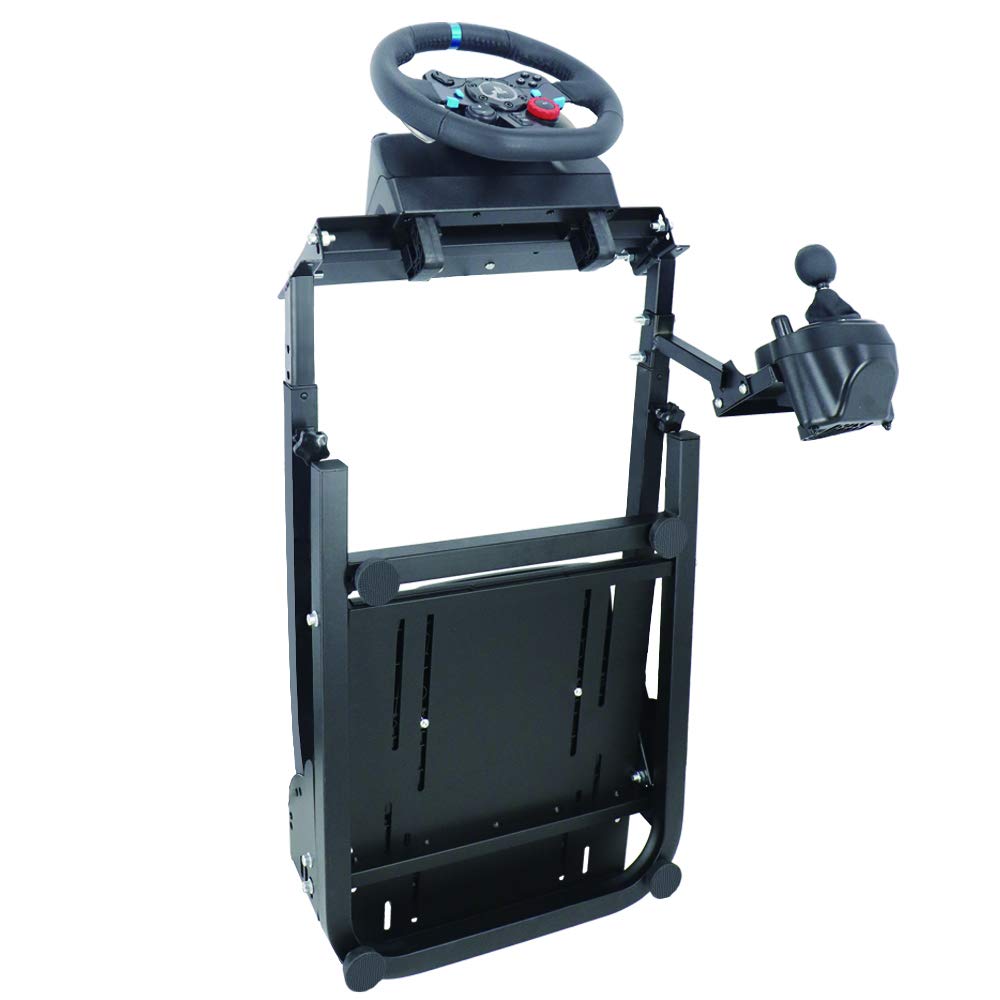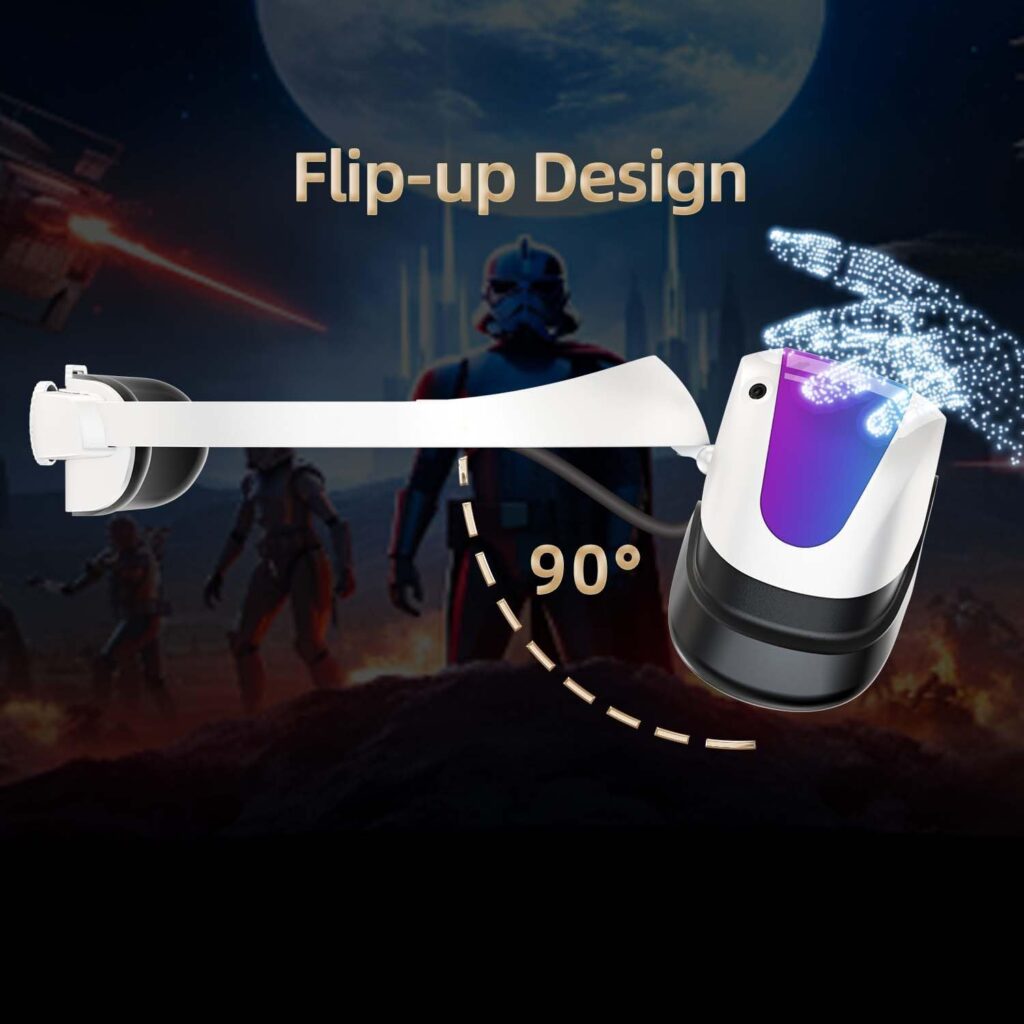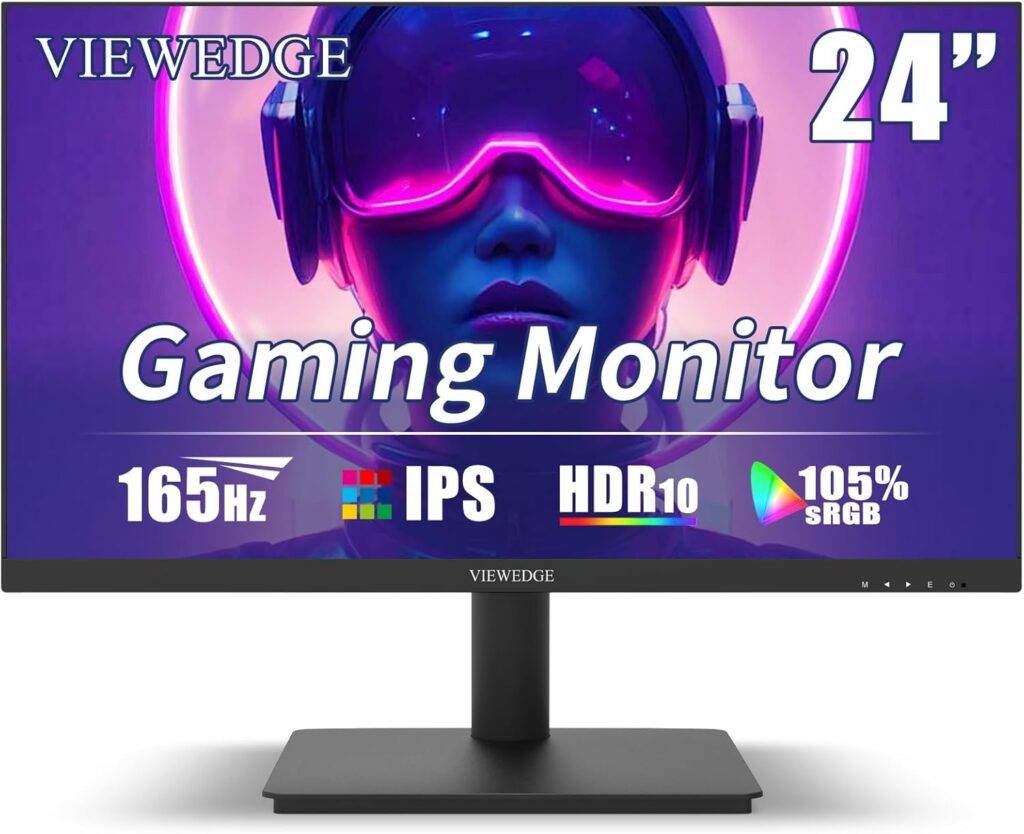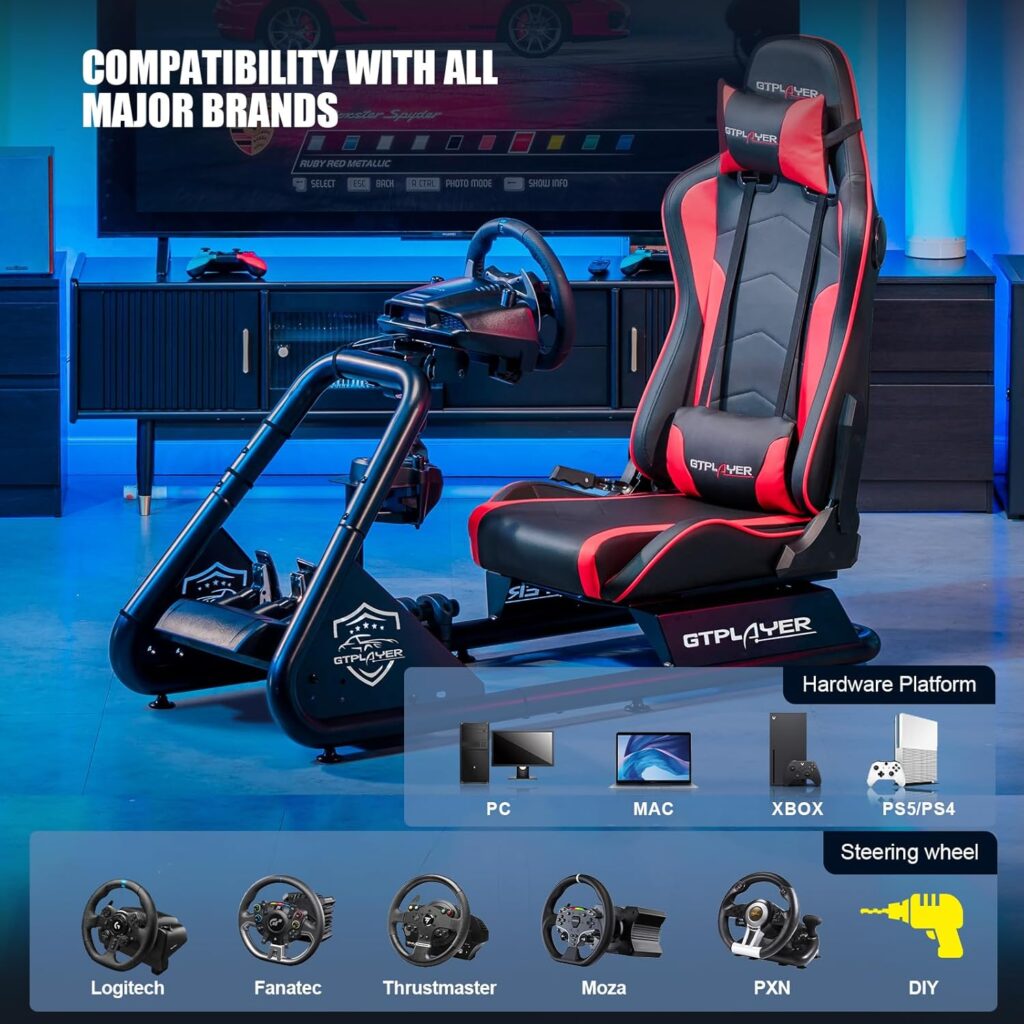Imagine yourself sitting in the driver's seat of a sleek sports car, gripping the steering wheel tightly as you navigate through hairpin turns and race against skilled opponents.
But as you delve into the world of racing games, you may find yourself faced with a choice: arcade racing or sim racing? Both genres offer their own unique experiences, but what exactly sets them apart?
In this discussion, we will explore the key differences between arcade racing and sim racing, from gameplay mechanics and realism to control and handling, and ultimately discover which style of racing suits your preferences and skills best.
So buckle up, because this is a journey you won't want to miss.
Key Takeaways
- Arcade racing games prioritize fun and excitement, while sim racing aims for a realistic driving experience.
- Arcade racing games have forgiving and accessible control and handling, while sim racing requires precise control inputs and a deeper understanding of car handling.
- Arcade racing games offer a mix of fictional and real-world tracks, while sim racing focuses on accurate real-world tracks.
- Arcade racing games target a wide audience, including casual gamers, while sim racing caters to a more dedicated audience of experienced racing enthusiasts.
Gameplay Mechanics
When it comes to gameplay mechanics, arcade racing games prioritize fun and excitement, while simulations focus on replicating the handling and feeling of real cars.
Arcade racing games, such as the popular 'Need for Speed' series, often feature exaggerated or ignored physics for the sake of gameplay. This means you'll experience intense speed, tight turns, and thrilling jumps that would be impossible in real life.
Simulations, on the other hand, like 'Gran Turismo' or 'Assetto Corsa,' aim to provide players with a realistic driving experience. They meticulously recreate the weight distribution, tire wear, and even the damage models of real cars. Simulations offer a more authentic driving experience, allowing you to feel the nuances of each vehicle and make strategic decisions based on real-world physics.
While arcade racing games are easy to learn and provide lots of freedom and additional challenges, sim racing offers a deeper level of realism, making it a popular choice for competitive gaming and a stepping stone for players entering the world of esports racing.
Realism and Immersion
To fully understand the difference between arcade racing and sim racing, let's now explore the subtopic of realism and immersion in these two types of games.
Realism and immersion in racing games refer to the accuracy of the driving experience and the player's sense of being part of the game world.
Sim racing, also known as racing sims or racing simulators, focuses on providing high levels of realism and immersion. These games aim to replicate the experience of driving real cars on real tracks. They offer a more immersive experience through realistic car handling, physics, and environment replication.
On the other hand, arcade racing games prioritize fun and excitement over realism. They often feature exaggerated or unrealistic driving mechanics, allowing players to perform stunts and maneuvers that would be impossible in real life. While arcade racing games are enjoyable and easy to play, they may lack the same level of realism and immersion as sim racing.
The level of realism and immersion in racing games can greatly impact the overall experience. For players seeking a competitive gaming environment and a true-to-life racing experience, sim racing is the way to go. These games provide a more authentic and immersive experience that can enhance the enjoyment of real racing enthusiasts.
However, for those looking for a more casual and lighthearted racing experience, arcade racing games offer a fun and exhilarating gameplay experience.
Control and Handling
Control and handling play a crucial role in determining the gameplay experience of arcade racing and sim racing games.
In arcade racing, control and handling are more forgiving and accessible, allowing for easy drifting and maneuvering around obstacles. The controls in arcade racing games are typically simple and responsive, making it easier for players to pick up and play without extensive practice. This accessibility makes arcade racing a popular choice for casual gamers and those looking for a more relaxed gaming experience.
On the other hand, sim racing prioritizes realistic control and handling, aiming to replicate the experience of real racing games. Sim racing requires players to manage factors such as tire wear, weight distribution, and suspension settings for accurate driving. This level of realism demands precise control inputs and a deeper understanding of car handling. Players need to master subtleties like braking zones and cornering techniques to excel in sim racing.
SimCade games strike a balance between arcade and simulation, offering adjustable control and handling options to cater to different player preferences. This allows players to enjoy a more realistic experience while still maintaining some of the accessibility and fun of arcade racing.
For racing drivers and those involved in competitive gaming or esports racing, sim racing provides a platform to hone their skills in a virtual environment that closely mirrors real-life racing. The realistic control and handling in sim racing allow for a more accurate representation of the challenges faced by professional racing drivers.
Variety of Vehicles and Tracks
Arcade racing games and simcade racing games offer a diverse range of vehicles and tracks to provide players with an exciting and varied gaming experience. Whether you prefer the adrenaline-fueled action of arcade racing or the realistic simulation of sim racing, both genres have something to offer when it comes to the variety of vehicles and tracks.
- Futuristic and Real-World Settings: Arcade racing games like Mario Kart and Need for Speed often feature a mix of fictional and real-world tracks. From fantastical locations to iconic cities, these games offer a wide range of environments to race in.
- Balance between Realism and Fun: Simcade racing games, such as Gran Turismo, strive to strike a balance between realism and enjoyment. They offer diverse car models and tracks that provide a realistic racing experience while still maintaining an element of fun.
- Absolute Realism and Accuracy: Simulators like iRacing and Assetto Corsa aim for absolute realism and accuracy. They feature a wide range of iconic race tracks and vehicles, allowing players to experience the thrill of real racing in the virtual world.
- Famous Real-World Locations: Sim racing games give players the opportunity to race on famous real-world tracks, such as the Nürburgring or Circuit de Monaco. This adds an extra layer of authenticity and excitement for those looking for a realistic racing experience.
Whether you're into the fast-paced action of arcade racing or the precision of sim racing, the variety of vehicles and tracks available in racing games ensures that there's always something for everyone in the world of competitive gaming.
Target Audience and Skill Level
With the variety of vehicles and tracks in arcade racing and sim racing games established, let's now explore the target audience and skill level that each genre appeals to.
Arcade racing games, such as Project Gotham and Forza Motorsport, target a wide audience, including casual gamers and younger players. These games offer simpler controls and accessible gameplay, making them easier to pick up and enjoy. They're perfect for beginners who want a fun and less demanding racing experience.
Sim racing, on the other hand, caters to a more dedicated audience, including experienced racing enthusiasts and even professional drivers. Games like F1 Sim Racing and Project Cars prioritize realism, technical detail, and challenging gameplay. They require a higher level of skill, patience, and dedication.
SimCade games, like Assetto Corsa, strike a balance between arcade racing and sim racing. They appeal to both beginners and experienced players who seek a blend of realism and fun.
Regardless of skill level, both arcade racing and sim racing offer unique and exciting experiences that allow players to enjoy the thrill of racing in the virtual world.




